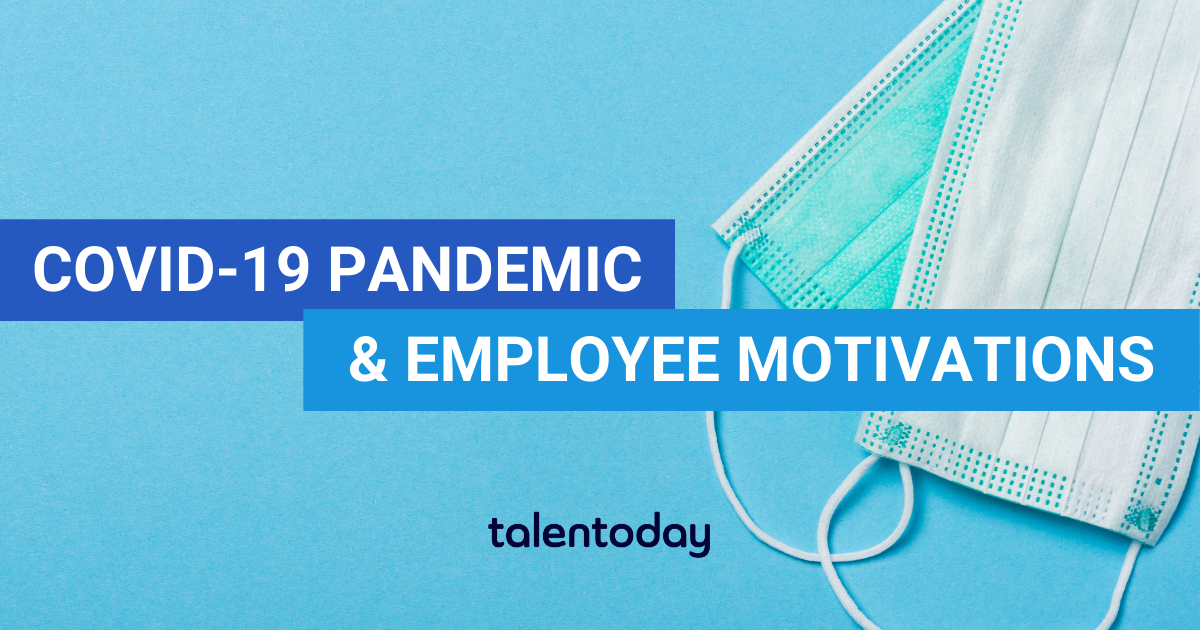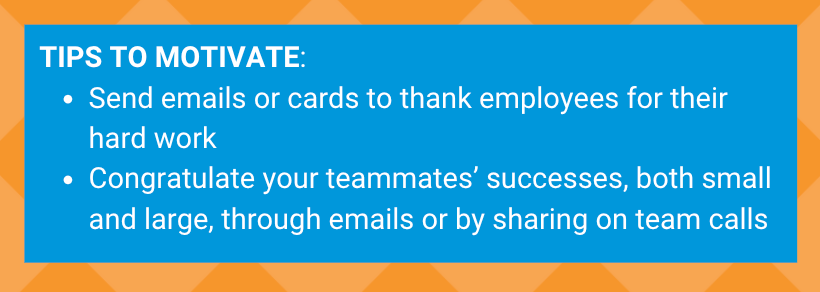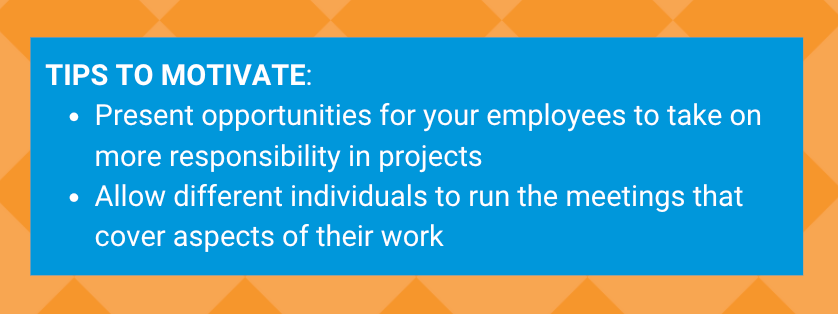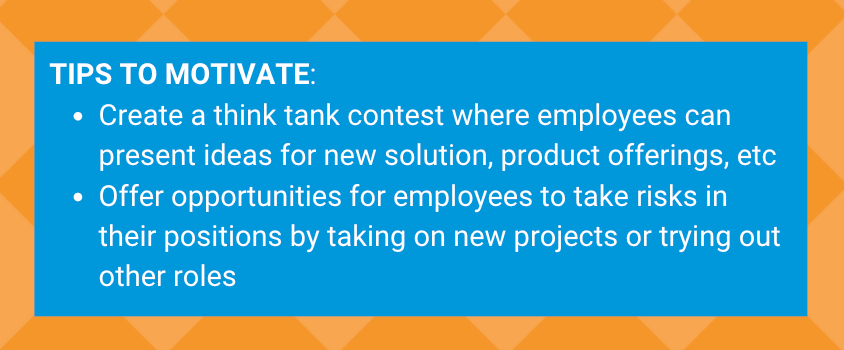Don’t Call It Quiet Quitting: How Catchphrases Miss the Moment in Employee Engagement
When it comes to understanding millions of unique individuals that make up the workforce, HR leaders have a habit of searching for simple answers. Take, for example, the phenomenon of, “Quiet Quitting.” Seemingly overnight, this two-word phrase took the world by storm. Not since the coining of the phrase, “The Great Resignation” has the world of work had more to say on a single topic. Reporters have penned article after article in a panic, portraying a new wave of employees silently stepping back from their job responsibilities.
Is quiet quitting a reason for real concern or is it just a shorthand for employers desperately seeking to simplify complex issues?
A Meaningful Misnomer
First things first, quiet quitting is a stylish bit of mislabeling. It does not actually describe anything to do with retention. Instead, the “quitting” being described is one where employees are leaving behind extra work that employers may have taken for granted. For example, employees are making the choice to stop working after hours or taking on tasks beyond their job descriptions. Therefore, quiet quitting is more about engagement and productivity than true turnover.
Secondly, the novelty of the phrase has led many people to assume it is describing a recent trend. Unfortunately, that could not be further from the truth. According to polling from Gallup, at least 50 percent of the U.S. workforce has been engaging in quiet quitting in one form or another since 2002! Why has this silent, steady march of decreased engagement suddenly gone viral?
The answer lies deeper in the data with Gen Z. The same polling indicates that the percentage of engaged employees under the age of 35 dropped by a full six percentage points from 2019 to 2022. For this group in particular, the dip in engagement is less of a steady march and more of a steep slide.
Going Beyond Buzzwords
There are no shortcuts for diagnosing complex workplace problems. Similarly, the solutions needed to address these problems must be thoughtful and built with employee experience in mind. Managers cannot solve a decades-long issue with a snappy catchphrase. Instead, organizations should consider taking these steps towards a more engaged workforce:
- Address engagement at the top first. Gallup’s research uncovered that only one in three managers are engaged at work. How can these managers expect their employees to go above and beyond in their roles without setting the example? In the race for retention, desperate leaders routinely offer titles and promotions without the proper attention paid towards the training needed for success in these roles. It’s time for leadership to rethink their reskilling and upskilling plans to equip today’s managers with the tools needed to succeed in a hybrid work environment.
- Better understand your employees. Few organizations have been spared in the last few years when it comes to high rates of turnover and struggles with retention. During this time, plenty of new employees have started their roles in remote or hybrid settings. This shift has made it difficult for managers to get to know their employees in the traditional ways, such as casual interactions during lunches or one-on-one discussions during the course of the workday. Managers need to embrace new ways of uncovering what’s driving their workforce, including soft skills assessments and regularly scheduled virtual check-ins.
- Respect boundaries. The knee-jerk reaction to the wave of quiet quitting think pieces would be to clamp down on employees with strict scrutiny. Instead, leaders should learn to respect their employees' boundaries. If mental health is truly a priority for companies today, then the path towards a more engaged workforce cannot be built upon blaming employees for organizational shortcomings. Opening a dialogue, investing in wellness programs and allowing employees to embrace balance will pay dividends.
Are you ready to go beyond buzzwords to better understand your workforce? Learn how Talentoday’s MyPrint assessment can provide a deeper understanding of your employees personality traits, motivations and behaviors.
4 Ways Companies Can Turn the Page on Turnover
It takes a lot of work to hire a new employee. Just think of all of that time and effort spent writing job descriptions, sourcing candidates, hosting interviews and making difficult decisions! At the end of all of it, everyone involved should have a cause for celebration. Unfortunately, high turnover rates can put a damper on any organization’s bright plans for the future. Instead of focusing on organizational and individual career growth, HR teams and managers must race to fill gaps while pushing their employees to do more with less.
Indeed, employees are feeling this strain. Recent polling presented by HR Dive indicates that 62 percent of employees are feeling an extra pressure to do more at work, triggering 33 percent to note a marked decline in workplace happiness. All of these negative sentiments bubbled up to a troubling conclusion: “a third of survey-takers said their desire to stay at their job has decreased; another third said they are actively thinking about leaving their organization.”
For struggling HR teams, moving forward while you’re stuck looking backwards to solve turnover troubles is simply unsustainable.
A Troubling Example
A recent study from the Wharton School tells the story of turnover pains in microcosm. Researchers worked with a Chinese cell phone manufacturer to track failure rates of their products over the course of four years. With an unprecedented amount of access to company data, they were able to pinpoint the exact date, time and location of assembly of each phone - along with the staffing levels at the time. Unsurprisingly, as weekly turnover rates in factories ticked up, so did the rate of product failure. The associated costs amounted to hundreds of millions of dollars.
The takeaways for the employer turned some perceptions of their workplace upside down. While managers assumed that replacing a vacancy with an equally experienced person would solve the problem, this, too, proved to be disruptive. “That person who left has some knowledge that’s not easily replaced,” noted Ken Moon, professor of operations, information and decisions at Wharton. “Even though an assembly line is not a deeply collaborative workplace, there is still a need to coordinate with those around you. And that matters.”
Four Ways to Rethink Turnover
Examples like the one identified by the Wharton School represent a warning call for employers. While recruiting to fill gaps on teams is necessary, there needs to be a renewed focus on retention. Institutional knowledge is not accrued overnight. When teams are stretched too thin, employers can have little hope of providing proper onboarding and ongoing training to build that knowledge.
In order to get from high turnover rates to promising retention rates, companies need to rethink turnover with four key areas of focus in mind: DEI, Growth, Communication and Culture.
- Diversity, Equity and Inclusion: Study after study has made it clear that employees want to work for companies that value diversity. Critically, they can also tell when they’ve been sold a bill of goods. Mentioning these key terms and commitments in job descriptions and your company’s digital presence is no doubt an important first step. Yet, not following through on those commitments risks alienating your workforce. Steps like hiring a team focused on DEI efforts, launching affinity groups and instituting regular check-ins with employees can take a company from words to action.
- Growth Opportunities: No one wants to take on a new role just to stay stagnant. According to Forbes, 76 percent of employees stated that they are more likely to stay with a company that offers continuous training. When this doesn’t happen at work, one in two employees decide to pursue learning opportunities on their own. This opens employers up to risk. Rather than risk losing employees as they look elsewhere for development opportunities, build a robust, in-house training system that takes employees from onboarding to continuous skills development.
- Holistic Communication: Communication cannot be a one-way street. This was true when a majority of employees worked in a single location, and it’s even more true with the rise of remote and hybrid working environments. There’s no quicker way to lose talent than to make them feel as though their voice is not heard. Expanding opportunities for feedback through options like anonymous surveys and virtual town hall meetings is key in a decentralized workplace.
- Adaptable Culture: By now, it’s tiring to repeat that culture is crucial (but it is!) However, rather than doubling down on fitting employees into a predetermined box of the way things are, companies need to be open to expanding their culture through addition, not exclusion. Steps like diversifying the talent pool and tapping into the soft skills and people analytics data of your existing workforce can help inform the direction of your ever-changing organization. Culture is a living thing; it’s time to treat it that way!
Are you ready to go beyond a one-size-fits-all approach to managing your team to avoid costly turnover? Learn how Talentoday’s MyPrint assessment can provide a deeper understanding of your employees personality traits, motivations and behaviors.
Putting People First in People Analytics
From financial services to manufacturing, big data has been revolutionizing the way industries work for years now. An explosion in the volume of available information and powerful tools able to analyze and apply learnings from it all have led to more efficient and effective workplaces processes. It was only a matter of time before data-driven solutions changed the way we think about human resources, too.
Now, people analytics (PA) has completely reshaped hiring and workforce management for organizations of all shapes and sizes. In fact, big data in HR is big business. According to the Harvard Business Review, “up to 70% of executives consider the implementation of PA capabilities as a top priority and predictions are that the value of the global big data analytics market will be around $68 billion by 2025.”
But is there a hidden cost behind this shift to data-driven decision making?
People Analytics 101
MIT Sloan professor Emilio J. Castilla defines people analytics as, “a data-driven approach to improving people-related decisions for the purpose of advancing the success of not only the organization but also of individual employees.” The key in this definition is the dual impact being described; properly designed, these applications can benefit both organizations and individuals alike.
To get there, companies are tasked with analyzing countless data points. Consider all of the valuable information HR teams gather from the start of the hiring process through the duration of an individual’s employment lifecycle. This information can include but is not limited to:
- Resumes
- Interview Responses
- Soft Skills Assessments
- Performance Reviews
- Salary History
Each bit of data reveals a new portion of the picture of the complex individual behind a given job title. Add enough of these pieces together and a detailed panoramic view of an entire organization comes into focus. That’s the real power of people analytics - the potential to unlock connections within an organization previously unseen by traditional HR practices.
How to Keep the People in People Analytics
Unfortunately, there’s a flip side to companies embracing PA in a big way. When mishandled, these efforts can send the wrong messages to a workforce and - even worse - double down on biased decision making.
Here’s how to avoid the potential dehumanizing effects of applying people analytics at your organization:
- Practice data due diligence. Put bias in, get bias out - it’s as simple as that. As pointed out in, “Using People Analytics to Build an Equitable Workplace” historical data can come with years of bias already baked into it. For example, previous hiring practices or review structures may have been inherently biased against particular groups of people. Steps very well may have been taken to rectify these issues. However, your AI tools will not understand these changes when processing the data. Therefore, “while algorithms can help interpret past data and identify patterns, people analytics is still a human-centered field, and in many cases, especially the difficult ones, the final decisions are still going to be made by humans.” Understand and accept the limitations of automation upfront, then confront them with thoughtful human intervention.
- Communicate your commitment to humanity. The core of people analytics (and human resources, for that fact) is people. It’s not about cold, calculated efficiency; it’s about making work better for everyone at a basic, human level. Leaders need to communicate this overarching goal at every step of the way when implementing PA principles across an organization. Rather than boiling people down to facts and figures, express the ways in which analyzing these data points can lead to improved interpersonal relationships, personal and professional growth and, ultimately, a happier workforce.
People First
At best, the big data revolution can be interpreted as a hopeful reimagining of our future. At worst, it is a cautionary tale about what happens when we reduce our humanity to a series of data points. People analytics has the potential to positively impact the way we build and manage teams. Yet, that potential will be squandered if we fail to recognize the human beings behind the data.
Talentoday provides science-driven people analytics to fuel better decision making at all points of the employment life cycle. Learn how our MyPrint assessment can provide a deeper understanding of your employees’ personality traits, motivations and behaviors.
Making Mental Health a Priority at Work (For Real)
Mental health is now big business. After all, it is estimated that companies lose up to $500 billion annually as a result of the negative effects of mental health problems on productivity. In response, each year companies will celebrate occasions like Stress Awareness Month and Mental Health Awareness Month in very public ways. Like clockwork, when the first of the month strikes, splashy videos and powerful statements hit social media. For the most part, the folks saying things like, “We value employee wellness,” and “Mental health is a priority for our team,” mean well.
Unfortunately, all too often, that's where the commitment ends.
While big talk about mental health might be enough to drive engagement online and attract new job candidates, it is not a long-term solution for any company that truly values retention, productivity or authenticity. For that, leaders need to move from words to action.
The Great Resignation: A Wellness Wakeup Call?
Employers expressed plenty of panic in the early days of the Great Resignation. “What could be driving an unprecedented number of employees to quit?” was frantically being asked in boardrooms and newsrooms across the country. The obvious answer to most questions lately can be traced back to the COVID-19 pandemic. Recent research from McKinsey indicates that 50 percent of Americans cite the pandemic as the most traumatic event that they have lived through.
To their credit, many organizations acted swiftly to roll out new wellness initiatives in response to this overwhelming employee feedback. Yet again, commitment is the key here.
The Fallout of Not Following Through
It’s incredibly difficult for companies to build back trust when promises are broken. Take these 2021 findings from Talkspace and The Harris Poll, for example. Their polling indicates that two of every three employees who consider leaving their job agree that their employer has not followed through on early pandemic promises to focus on employee mental health. It’s one thing to assume your employer isn’t paying attention to the wellness of their workforce; it’s another thing to see them use the opportunity to seize on a trend and save face while not backing up their public persona with internal action.
Alas, it should not be a surprise that these heightened levels of stress are not going away any time soon. In fact, that same poll noted that more than 40 percent of employees stated that they are likely to seek a job change due to stress. For example, even if the COVID-19 pandemic subsides completely, stressors around another upheaval in the way we work - the “return to the office” for millions - can trigger a new wave of burnout employees.
Making a Mental Health Commitment (For Real)
To be clear, vocalizing the importance of wellness in the workplace is a critical first step for any organization that wants to get serious about mental health. It can set a marker in the ground, build intention and act as a positive step for breaking the stigma surrounding mental health issues. However, to make a real positive impact, companies need to go further in three critical ways.
- Go Beyond Statements. Raising the banner of mental health has meaning, but making it deeply ingrained into company culture is much more difficult. HR managers must share clear communication on any wellness program not only during its launch, but on a regular basis. Do your employees know the services that are available to them? Train those in a position of power in areas such as soft skills that can have an impact on identifying opportunities to put mental health initiatives into practice when needed.
- Lead by Example. Making space for employees to take time for self-care matters. Unfortunately, employees will not take advantage of these opportunities unless their managers show that it’s okay to do so first. For example, if your company has begun offering days off for mental health, leaders can begin solidifying them as cultural cornerstones by taking them seriously; this means no offline emails!
- Embrace Unique. Mental health is not one-size-fits-all. Some individuals may prefer to express concerns about mental health issues anonymously via written survey tools; others may be open to one-on-one discussions with their managers. To know what works best for your organization, take the time to better understand the people behind the job titles. Tools like soft skills assessments can not only provide a window into the personality, motivations and behavioral tendencies of employees, but also their preferences for working as a team. This information should inform the solutions that are built to best serve both the individual and the organization as a whole.
It Matters.
Every step towards a better workplace matters because mental health matters. However, there is a danger in taking steps without putting thought towards the meaning behind them. Words without intention can wreak havoc on trust and employee retention; a lasting commitment to the mental health of your workforce takes an investment of time and resources.
Are you ready to go beyond a one-size-fits-all approach to your team? Learn how Talentoday’s MyPrint assessment can provide a deeper understanding of your employees personality traits, motivations and behaviors.
Workplace Learning Reimagined with Soft Skills
Take a seat. Log in. Dust off those textbooks. Schoolwork has a whole new meaning because workplace learning is now in session!
The incoming class of new hires is sending a clear message that learning and development at work must be a priority for employers. Recent polling from LinkedIn indicates that 76 percent of Gen Z job seekers are looking for more opportunities to learn or practice new skills.
They may be leading the pack in this regard, but Gen Z is not alone. The desire to develop skills is growing across the working world, spurred on by a variety of factors. For workplace learning to work, leaders need to embrace soft skills research in order to build the right programs for their workforce.
New Learning for a New Kind of Workplace
First, there are two major factors driving this shift towards increased workplace learning opportunities. For one, COVID-19 completely upended the traditional working environment for countless companies. With the expansion of remote and hybrid work, training professionals adapted many in-person training exercises for virtual settings. While this may have been a barrier for some employees based on their preferred learning styles (more on that later), it also expanded access to on-demand training for many.
Second, with expanded remote opportunities came an expanded hiring pool.Employees were no longer limited to geographic requirements for consideration. This, coupled with talent shortages stemming from the Great Resignation, also caused hiring managers to rethink their processes with diversity in mind. Instead of limiting a team’s growth potential by focusing on a narrow set of required qualifications, employers began opening their minds to different kinds of candidates. Now, there’s more space for individuals who may not have a lengthy resume, but who show potential and a willingness to learn.
After all, the hardest part of hiring is getting the right people on board!
Learning Your Team's Learning Styles
However, now organizations face a new challenge: Building workplace learning programs that help employees develop the skills they need to succeed in a way that’s personalized to their unique learning styles. As Kate Tornone notes in HR Dive, “It’s not enough to hire a diverse workforce; to be an inclusive workforce, everyone must have an opportunity to learn in whatever style works best for them.”
One shorthand for learning styles is known as VARK, which is an acronym referring to four distance preferences when it comes to learning:
- Visual: Using images to understand new information.
- Auditory: Using listening and speaking in settings like group discussions to understand new information.
- Reading/Writing: Understanding through the power of written words, such as note taking while reading.
- Kinesthetic: Learning by doing in hands-on, situational training sessions.
While it’s true that individuals most often learn through a combination of these styles, identifying employee preferences can have a big impact on the efficacy of L&D efforts. To get there, employers need to dig into the science of soft skills in order to gain a deeper understanding of who is on their team.
Starting Your School of Skills
Before diving headfirst into a new education plan of action, stop and take stock of what’s needed for your workforce. In addition to identifying skills gaps to close that would boost productivity, the Society for Human Resources Management (SHRM) recommends surveying employees about their training interests. “A successful learning and development program shouldn't be solely about the company's needs…Adding opportunities for personal development…will communicate to employees that their personal growth is just as important to the company as their productivity.”
Taking this a step further, consider having your workforce complete a soft skills assessment to gather a more holistic understanding of their approach to learning. In addition to their preferred learning style, the right assessment can provide eye-opening insights, such as the best way to provide feedback. This level of detailed people analytics can go a long way towards building a workplace learning environment tailored to the needs and preferences of your unique workforce.
Class Dismissed?
Hiring and retaining top talent is increasingly difficult in a tightening labor market. LinkedIn has uncovered that 51 percent of L&D professionals note internal mobility as more of a priority in the COVID-conscious workplace. This stands to reason, seeing how employees at companies with internal mobility stay in their jobs, on average, about twice as long. When it comes to onboarding, upskilling and reskilling programs, it’s no longer enough to simply offer these opportunities; it’s time to build personalized solutions driven by the data of people analytics.
Are you looking to go beyond surface-level training programs to connect workplace education with soft skills data? Learn how Talentoday's MyPrint assessment can provide a deeper understanding of your employees personality traits, motivations and behaviors.
3 HR Trends That Will Define 2022 and Shape the Future of Work
Employers entered 2021 with cautious optimism. After a year of pandemic-induced uncertainty, there was hope that improved safety measures, including the widespread availability of life-saving vaccines, would bring back a sense of stability to the working world.
Unfortunately, as our plans for the workplace evolved, so did COVID-19.
And so, 2022 begins with familiar themes for employers and employees alike. COVID variants are forcing many to maintain or step back into hybrid and fully remote settings. Organizers of team building events, training and onboarding sessions, industry conferences and other in-person plans must once again adapt, reschedule or prepare to shut it all down entirely.
Will the year ahead be a repeat of the last one? Not quite. Three HR trends are poised to define 2022 by building upon concepts that have had a positive impact on working teams struggling to find their footing in a pandemic world: Skills-based hiring and retention efforts, workplace wellness programs and DEI initiatives.
Emphasis on Skills-Based Hiring and Retention Efforts
The only phrase that may have appeared in more headlines than “COVID-19” in the last year was “The Great Resignation.” Eye-popping numbers, such as a record 4.3 million workers quitting their jobs last August alone, confirm that this reshuffling of the workforce is more than just a passing phase. Now, employers are embracing the fact that the old ways of hiring and retaining talent are not cutting it anymore.
- Hiring: For one, skills-based hiring has gained new attention as the talent pool tightens. Recent reporting from AARP indicates that most employers (76 percent) say they prioritize skills over other factors, such as education, when hiring. 66 percent say their organization needs to go even further in emphasizing the importance of skills above everything else. However, the skills needed for work in an increasingly hybrid and remote world are different from those needed in previous settings. In fact, an evaluation of thousands of Talentoday MyPrint assessments - our proprietary questionnaire scientifically designed to explore individual personality traits and motivations - taken prior to the onset of the pandemic compared against data collected in the months that followed revealed a rise in the prominence of certain soft skills (autonomy, recognition and responsibility) and the decline of other soft skills (structure, empathy and grit.) In short, the way we work is changing, but organizations have been slow to match their hiring practices to this shift. For employers, it’s time to catch up or risk missing out on top talent.
- Retention: While getting new talent in the door poses a challenge for employers, keeping them in the room is even more difficult. To cut down on climbing turnover rates, employers are going beyond increased compensation and unique benefit packages to entice employees to stay put. The new word in retention is growth. HR teams are redesigning their training programs to make upskilling a priority. First, organizations are evaluating their current workforce to identify where skills gaps exist. Then, managers must implement flexible action plans tailored to individual and team availability. An investment in people today can pay dividends in the months and (hopefully) years ahead.
Wellness Programs are Here to Stay
Of course, 2020 was a wake up call for many companies. Employees were faced with a global crisis and made it clear that they were not okay. In response, a reported 94 percent of companies made investments in well-being programs, including support for mental, physical and financial health. Unfortunately, that same reporting reveals that less than 40 percent of employees have taken advantage of these programs being offered by employers. Does this mean that these programs where just another addition to the list of failed HR trends or is there something else going on here?
Moving forward, HR professionals will need to find ways to better engrain these offerings into company culture. For example, coupling formal benefit offerings with practices such as mental health time off and personalized recognition offerings can transform these initiatives from window dressing into core practices tied to everyday work activities.
Diversity, Equity and Inclusion in a Hybrid World
Finally, there’s a new digital divide emerging between the in-person workforce and those working in remote settings. According to Harvard Business Review, managers are more likely to promote employees who come into the office compared to those who don’t, regardless of performance. The same data shows that women and people of color are preferring to work from home at greater rates compared to white men. This could mean that marginalized groups will once again be excluded from key opportunities.
The irony is that the very same hybrid and remote work opportunities that have expanded talent pools for many organizations may now be contributing to gender wage gaps and a lack of diversity in leadership positions. After a period that has brought so much attention to diversity, equity and inclusion in the workplace, employers must find a way to double down on these efforts in an increasingly hybrid world.
The Future of Work and These HR Trends
It’s impossible to predict what the future holds when it comes to factors outside of our control, including the changing nature of COVID-19. Yet, organizations can take control of the ways they attract, retain and empower the talent they employ. These HR trends are more than just the hot topics of the moment; they represent a significant shift towards valuing what matters most in any workplace settings - the health, wellbeing and growth of people.
Meet the moment by addressing these HR trends for the year ahead with the power of people analytics. Experience how MyPrint can uncover a better way to hire and retain a top team by clicking here!
Rethinking Retention and Reining in the Great Resignation
If you’re an HR professional, you are well aware of the stats by now. A majority of employees (65 percent, according to PwC) are on record saying that they are at least entertaining the idea of leaving their workplace for a new job. This August, a record 4.3 million workers actually took the leap and quit their jobs. In short, businesses in all industries are facing an employee retention crisis.
The question is no longer, “Is the Great Resignation really happening?” In the wake of the effects of COVID-19 and the economic uncertainty that has come with it, the U.S. workforce has answered that question with a resounding, “Yes!” For organizations looking to stabilize their teams, the billion dollar question now is, “How do we rein in our great resignation with a healthy dose of great retention?”
One thing is clear: The old ideas for keeping employees engaged and employed simply are not cutting it anymore. Thankfully, three building blocks for rethinking retention - identifying what makes your situation unique, reevaluating career paths and getting creative - provide a starting point for leaders in need of continuity in their workforce.
Identify What Makes Your Situation Unique
The Great Resignation may be a catchy name, but lumping together millions of life-altering career decisions into one neat package can be misleading. Buried within the shocking statistics and clickable headlines are millions of individual personalities, motivations and behaviors driving these choices. The reasons for increased turnover can vary widely from company to company, team to team and person to person. Therefore, it’s important to zero-in on what makes your situation unique.
Employing quick-fix solutions, like increasing compensation for particular high-turnover roles, may be tempting, but can also prove to be short-lived in effectiveness. Instead, consider utilizing company-wide surveying and soft skill assessments. These scientific tools can give leaders measurable insight into what’s driving change, as well as what might be more likely to encourage employees at a team and individual level. After all, if the factors driving employees to leave aren’t one-size-fits-all, why would a single solution get retention back on track?
Reevaluate Career Paths in a Changing Workplace
A recent survey commissioned by The Conference Board revealed that 58 percent of talent acquisition and HR leaders report that their employees are concerned about upward mobility if they are not physically in the workplace. These results highlight that the disconnect from the shift to remote and hybrid workplaces runs much deeper than missing out on water cooler conversations; employees are increasingly losing a grasp on the opportunities for growth available to them within their organizations. If employees cannot see a future for themselves where they’re currently at, it stands to reason that they’d look elsewhere for fulfillment.
How can companies counteract resignations stemming from this disconnect? The report goes on to recommend that organizations reward leaders for facilitating internal movement of employees, develop a cross-functional talent mobility program and find ways to give virtual employees added exposure to these opportunities for mobility. The motivations that drive an individual’s career decisions naturally change overtime. For better or worse, the COVID-19 pandemic has accelerated these changes for many people. Before losing talent to greener pastures elsewhere, leaders need to provide their employees with opportunities for upskilling, growth and lateral moves internally.
Get Creative Early and Often
When an employee decides it’s time to move on, there are plenty of options available to organizations trying to find ways to keep the talent in-house. While money can be enticing for many employees, it’s not a panacea (and some organizations simply cannot withstand a counter-offer war for top talent given their current financial situation.) It’s time for companies to become creative when finding ways to retain employees. Using people analytics derived from surveying and soft skills assessments, HR professionals can better identify incentives that are personalized to the individual. For example, while an increased annual salary might be a key driver for one employee, more flexibility in scheduling and work environment might rank higher for another.
However, one major takeaway for the HR Community in light of the Great Resignation should be that preventative measures need to be taken before workers begin to leave en masse. Let your creativity shine long before it needs to be used in a last-ditch effort to hold onto employees! According to Inc.com, some CEOs have begun relying on exercises such as “anything but work” check-ins, gratitude sharing sessions and games to connect with employees on a personal level in the era of hybrid work.
Will these efforts help boost your organization’s employee retention in the face of the Great Resignation? The only way to know is by building personalized solutions tailored to the needs of each employee. Otherwise, you'll be resigned to riding a rising tide of turnover.
Are you ready to identify what motivates your candidates and employees? Experience how MyPrint can uncover a better way to hire and retain a top team by clicking here!
Understanding the Difference Between Intrinsic and Extrinsic Motivations
When it comes to motivating employees, one size does not fit all. For some people, the thrill of competition for hitting or exceeding key metrics, like number of sales per quarter, gets them excited. For others, discovering the best way to complete a given task, such as finding the most efficient solution for cold calling, might be a source of inspiration. No matter how it happens, employers recognize that maintaining employee motivation is key for sustaining success - especially in hybrid and remote work environments.
Before launching new programs aimed at motivating a workforce, it’s important to first understand the nature and types of motivations that exist. Then, tailor those available options to meet the unique needs of each employee.
Why is Motivation Essential?
Obviously, employing and supporting a motivated workforce should be a priority for all organizations. However, the effects of the COVID-19 pandemic have shown us just how valuable it is to have a varied approach to motivation.
For example, a recent survey from Jostle of 400 employees who shifted to remote work in the past year revealed that a whopping 83 percent of individuals reported feeling disconnected from their workplace culture. While productivity may not have dipped in the short term, the fact that a majority of respondents also noted feeling less supported by managers during this time makes it clear that these results in output are not sustainable over the long-term.
As the way we work changes, so too must the way that managers motivate their teams. As organizations embrace a hybrid approach to work, combining virtual and in-person elements, it’s time to look at motivational practices in the same way.
To get to the heart of the motivation question, here is the first question every manager must ask: Are my employees driven by intrinsic or extrinsic motivations?
Intrinsic or Extrinsic Motivations
To start, the concept of separating out intrinsic and extrinsic motivations is a fairly straightforward - yet essential - exercise. According to Psychology Today, “intrinsic motivation refers to those activities you do because you enjoy the activity itself,” whereas extrinsic motivations refer to anything we do because of reasons outside of the work. Extrinsic motivators include salary, job perks/benefits, status and work conditions. Intrinsic motivators include things like recognition, challenging work, purposeful work, achievement and opportunities for personal growth.
Consider the examples mentioned at the start of this piece. A sales team competing for top spot on the quarterly metrics tracker would be a textbook example of an extrinsic motivation. Even though making sales might be related to the job at hand, taking first place in this competition is a motivation tied to results, not the tasks of the job itself. On the other hand, an employee might find joy in the actual process of selling. For example, the step-by-step journey of finding the best times to make outreach and most effective scripts might be exciting in its own right.
For those motivated intrinsically or extrinsically, there are a variety of ways employers can meet their needs with tailored solutions. Here are the forms of intrinsic and extrinsic motivations identified by the MyPrint soft skills assessment:
Intrinsic
- Responsibility: This motivation dimension refers to the extent that a person seeks to feel accountable. While some individuals find joy in making big decisions for their teams, others would like to share that responsibility with others.
- Influence: This motivation dimension refers to the extent that a person seeks to influence others’ opinions and intentions. Those that are highly motivated by influence enjoy swaying others’ opinions, while those that are lower on this motivation dimension are happiest when they can stay open-minded to different points of view.
- Belonging: This motivation dimension refers to the extent to which a person wishes to be part of a group. Individuals who are highly motivated by belonging seek to find common interests and hobbies with their coworkers to create a team feeling, whereas other individuals like to keep their interests or opinions independent from the rest of the group.
- Challenge: This motivation dimension refers to the extent that a person seeks to get out of their comfort zone. Those that are highly motivated by challenge will always try to outperform their previous goals and achievements, whereas those that are not as motivated by challenge are content working towards attainable goals.
- Recognition (Intrinsic enjoyment): Those that are on the lower end of the recognition dimension are seeking intrinsic enjoyment. They seek out projects and tasks that they enjoy doing, even if they are not receiving any external recognition for their work.
- Reward (Need to contribute to society): Those that are on the lower end of the reward dimension seek to work on projects that have an impact on society. They need to understand the greater impact of their work, regardless of the tangible benefits they might receive.
Extrinsic
- Autonomy: This motivation dimension refers to the extent to which one wishes to control their circumstances. Those that are highly motivated by autonomy like to set their own goals and schedule, whereas those who are lower on the autonomy dimension prefer to consult with others before setting their goals.
- Competition: This motivation dimension refers to the extent that an individual will seek to outperform others. Those that are highly motivated by competition like environments that encourage public performance metrics, whereas those that are lower on the competition scale will seek to share their knowledge to help work towards group goals.
- Relation: This motivation dimension refers to the extent to which an individual seeks to have multiple social contacts. Those that are high on this motivation dimension seek out opportunities to socialize as frequently as they can, whereas those who are lower on this dimension desire privacy in their work environment.
- Recognition (External acknowledgement): Those who are high on the recognition dimension seek positive feedback and compliments for a job well done. The external recognition is enough to keep them motivated, even if they do not necessarily enjoy the work they are doing.
- Reward (Tangible benefits): Those who are high on the reward dimension are motivated by having their performance rewarded by material benefits. They will often be encouraged to work harder when there are opportunities available.
- Excitement: This motivation dimension refers to the extent to which an individual is motivated by thrill. Those who are highly motivated by unpredictable environments and the opportunity to take risks, whereas those on the lower end of the excitement dimension prefer safe and predictable environments.
- Variety: This motivation dimension refers to the extent to which an individual seeks out new experiences. While some individuals seek out diverse experiences, projects, and skills, others prefer to stick to familiar routines and work methods.
Motivating and Moving Forward
Gone are the days of ordering pizza into the office to celebrate a job well done and calling it a day. In the changing world of work, managers need to become more nuanced in the ways they motivate employees. To start reshaping these practices on a case-by-case basis, it’s important to identify whether an individual is driven by intrinsic or extrinsic motivations. Only then can managers determine which particular path is right for each employee.
Are you ready to identify what motivates your employees? Experience how MyPrint can uncover what makes you and your team unique by clicking here!
Why Upskilling is Crucial for Hybrid Teams

There were a lot of things I didn’t know I could do before COVID-19 upended the way we live and work. For example, I already knew my way around the kitchen, but I had no idea I could make tasty banana bread! I also learned how to cook a spicy jambalaya, brew my own beer and, when I wasn’t eating or drinking, I figured out how to use a 35mm film camera to expand upon my interest in photography. In my home life, I would call these achievements “little victories.” Little did I know that, were I to do the same sort of expanding of my talents in the workplace, it would be known as “upskilling.”
Upskilling is the process of using training and education to deepen an employees’ abilities within their area of expertise. This is slightly different from reskilling, which is when an employee is trained on an entirely new skill set in order to move into a different role. Instead, upskilling is all about building upon an employee’s existing skills in hopes of enhancing their impact on an organization.
While my personal upskilling may not have major implications for the workplace (even if some morning meetings are greatly improved by the addition of banana bread), upskilling has the potential to reshape the way organizations recruit and develop talent – especially as teams embrace hybrid work models.
The Skills Gap Continues to Expand
As the modern workplace undergoes unprecedented changes, existing skills gaps across all industries are widening. While employees may have entered into the workforce with skills that were in high demand at the time, the rate of digital transformation has increased sharply in response to the COVID-19 pandemic, leaving many of these employees behind. According to McKinsey & Company, 87 percent of companies say they have skills gaps or expect to within a few years. Jobs are changing fast, and employers and employees are struggling to keep up.
There are a few options at organizations’ disposal for dealing with these gaps in needed competencies. In less competitive hiring markets, one appealing course of action would be to bring in new talent to fit the needs. However, today’s recruiting landscape is characterized by a dwindling supply of talent and an aggressive influx of demand from employers. These conditions have forced many employers to look inwards when determining how to address their skills gaps in the years ahead.
Employees are Looking for a Change
To exacerbate the problem even further, this expanding skills gap comes at a time when workers are beginning to quit jobs at extraordinary levels. In April 2021, the number of employees leaving their companies spiked to approximately 4 million according to the Bureau of Labor Statistics (BLS), leading many to refer to the phenomenon as, “The Great Resignation.”
In truth, does anyone ever really want to be forced to find a new job? In the same way that employers would rather retain talent than search for replacements, employees are hoping for reasons to stay at their current organizations before making a drastic move. Take the results of a recent PwC survey into consideration. Their findings show that the majority of workers are open to change, citing that 40 percent of respondents successfully improved their digital skills during the pandemic and over 90 percent of those who adapted to remote work would prefer to continue working in this style of environment. On top of that, 77 percent of workers are ready to learn new skills.
The issue is not a lack of willingness to learn on the side of employees but, rather, the lack of opportunities for upskilling offered by employers. However, if organizations are serious about closing their skills gap and retaining employees in the face of an explosion of resignations, it’s time to make learning and development programs a real priority.
Make Upskilling a Priority
While employers seem to recognize the problem they face, there remains a gap between this recognition and an understanding of how to address the underlying causes. According to a 2021 survey conducted by Gartner, 68 percent of HR leaders cited building critical skills as a top priority. However, more than 30 percent of the same leaders say that they don’t know what skills gap their employees have, how to effectively integrate learning into employee workflows or can’t create skill development solutions fast enough to meet evolving skill needs. In short, employers know there are skills gaps to address, but are uncertain where they lie or how to fix them.
The way forward is two-pronged, based first on assessment then solidified with commitment:
- Assessment: First and foremost, organizations need to utilize tools to empower them to better evaluate their candidates and employees. Knowing the current capabilities of a team is important, but identifying the potential for growth can be critical. While necessary technical skills can be assessed through traditional means, such as verifying education and certification backgrounds, this must be coupled with a deeper understanding of soft skills. Scientifically-based soft skills assessments can provide insight into an individual’s capacity to upskill into a role over time.
- Commitment: Once the workforce has been properly assessed, organizations must then approach upskilling differently than standard onboarding and other job-specific training opportunities. Instead, upskilling opportunities must be treated like the valuable benefits they are. As noted in Fast Company, “For the top tier of talent, upskilling is emerging as a must-have employee benefit, like a retirement saving plan, employer subsidized health care, or paid time off.” In other words, these education programs cannot be haphazardly inserted into existing workflows. Rather, time and space must be set aside for employees to truly feel as though upskilling is a top priority.
As the way we work continues to change, teams are struggling to keep up. However, by devoting time and effort to upskilling programs, there are win-win solutions available for employers and employees alike.
Are you ready to evaluate your team’s soft skills to determine upskilling opportunities? Discover the powerful science of people analytics that drives MyPrint by clicking here.
COVID-19 Impact on Motivations in the Workforce
It’s been one year since COVID-19 took the world by storm. Countries started to close their borders and government safety regulations were enforced. As a result of unpredictable lockdown and safety measures, each person’s environment has changed in some way. For millions of typical “office workers” this meant working from home, while those deemed essential continued to go into work with increased risk. With all of this change happening externally, there is internal change that comes with it. How has the move to a remote workspace, social distancing, new health measures, and other pandemic outcomes impacted the things that motivate your employees? Let’s learn more about how motivations work first.
One of the most widely accepted motivation theories is Maslow’s Hierarchy of Needs. You may recognize the motivation pyramid that has found its way into most every psychology, marketing, and ethics textbook, and it is the foundation for the Talentoday MyPrint motivation dimensions as well! There are five stages of motivation included in the pyramid: physiological needs, safety needs, love and belongingness needs, esteem needs, and self-actualization needs. The basis of Maslow’s theory is that everyone starts at the bottom stage of the pyramid with their most basic physiological needs: food, water, clothing, and shelter. Once those needs are met, we are able to work our way up to safety, and so on.
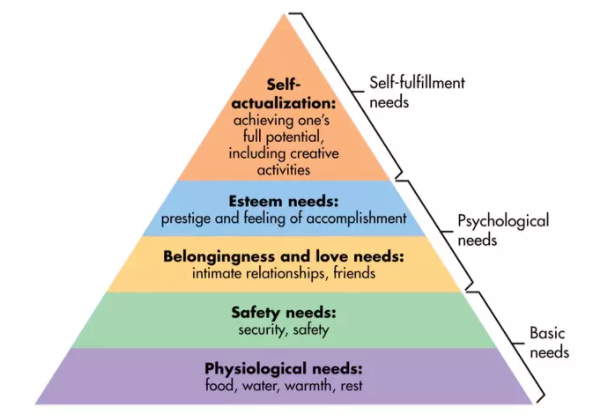
Our environment plays a huge role in our motivations and where we’re at on the pyramid. For example, during the COVID-19 pandemic, we have seen a lot of people focus on addressing their basic safety needs, like employment and financial stability. Other factors that can impact our motivations include, but are not limited to, changes to our work environment, major family events such as births or deaths, changes in our relationship status, living situations, or unforeseen financial events.
Motivations and MyPrint®
Since we know that motivations are so dependent on our environment, we decided to take a look at how the COVID-19 pandemic has impacted the motivations found in MyPrint®. To do this, we calculated the motivations that saw the biggest increase amongst assessment takers before and after March 2020. We observed three dimensions that had a larger increase than the others: Recognition, Responsibility, and Excitement.
Recognition: Need for External Recognition
People who have a need for external recognition are driven to work harder when they receive positive feedback and praise from coworkers. When working in an office environment, this will naturally happen more frequently; you tell an employee they did great on a presentation while passing their desk, or congratulate a coworker on hitting a milestone while you’re getting your morning coffee. However, in a remote environment, we need to be more intentional about giving that recognition. Since March 2020, a total of 81% of the global workforce has had their workplace fully or partly closed. Whether this impacts someone directly, or if they are seeing this happen with their friends and loved ones, receiving that external recognition can help to reassure individuals that they are doing a good job and motivate them to continue the good work.
Responsibility: Need for Taking Personal Responsibility
People who have a need for taking personal responsibility are comfortable being held accountable for others’ actions, regardless of error or failure, and are more comfortable being accountable for their own work as well. Moving into a remote work environment means that individuals need to take on more personal responsibilities than they did before: from managing all of their time to taking on pieces of projects that they might not have needed to before. For some people, having more control over their work environment can create that drive to keep them motivated at work.
Excitement: Need for Adventure
People with a need for adventure are driven by situations that offer thrill, seek to take risks and are very tolerant of unpredictable situations. A lot of people have experienced a more stagnant environment since March of 2020. Whether it is due to stay at home orders, travel restrictions, or lack of a commute, we are all going through it. Because of this, it is not surprising that people are craving more adventure in their lives. Work can be a great place to create excitement — from new opportunities to new roles or training, providing an environment where employees can take more risks and try new things can lead to a more engaged workforce.
Check In With Your Workforce
Your workforce is going to evolve over time, and it is important to keep up with those changes! Whether it’s a global pandemic to impact the shift in motivations, or if it’s typical life events taking place, you want to make sure that you are evolving alongside your employees. Changes to an employee’s motivations means adjusting your management style, and by keeping up with these changes, you can create the most engaging environment for your workforce as possible.
We recommend employees take the MyPrint assessment every 6–12 months. Interested in learning more about MyPrint and how our solutions can help you better understand your workforce? Contact Talentoday at customer@talentoday.com to learn more about our assessment and services!










